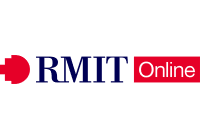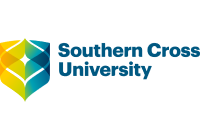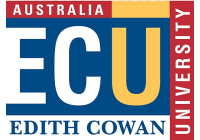Have you ever wondered how some project management teams manage to complete projects within tight deadlines while others struggle? The answer lies in adopting an agile framework known as Scrum. Scrum is becoming increasingly popular in Australia and for good reason.
In short, Scrum is an agile methodology that allows project teams to work together in a highly collaborative and flexible manner to achieve shared goals. It emphasises teamwork, communication, and continuous improvement. This methodology involves working in short, time-boxed iterations, known as sprints, which typically last between one and four weeks.
If you want to learn more about Scrum and how it can benefit your project management team in Australia, then this article is for you! From its origins to its core principles, from the roles of the team members to the Scrum events, we cover it all in detail.
So, whether you are a project manager, team leader, or team member, this article will help you better understand Scrum and how to use it effectively to improve your project outcomes.
Quick Links To Online Project Management Courses
RMIT Online
Project Management for Professionals
- 6 weeks, 8 hours per week
- $1,200 incl. GST
- No Prerequisites
Southern Cross University
Graduate Diploma in Project Management Online
- 16 months part-time
- $2,990 per unit, FEE-HELP available
- Intakes: Jan, Mar, May, July, Aug, Oct
Edith Cowan University
Master of Project Management Online
- 24 months / 18 months (Fast-Track) minimum, Part-Time
- 12 units / 9 units (Fast-Track)
- $52,080 / $39,060 (Fast-Track); FEE-HELP available
What Is Scrum?

Scrum is one of the most used Agile project management methodologies. It places an emphasis on teamwork, cooperation, and communication in order to successfully complete projects. In the 1990s, Jeff Sutherland, Ken Schwaber, and Mike Beedle came up with it as a method to manage difficult software development projects. They called it Extreme Programming (XP). Since that time, a huge variety of businesses and other types of organisations have started using it.
At its foundation, Scrum is founded on the concept of incremental development, in which individual parts of a larger project are worked on and finished in discrete intervals of time, known as "sprints." Sprints generally run anything from one to four weeks, and during that period, the team is tasked with concentrating on accomplishing a certain collection of responsibilities or goals.
Scrum is organised around a number of essential roles, the most important of which are the Scrum Master, the Product Owner, and the Development Team. The Scrum Master's duties include assisting the team in overcoming any challenges that may occur throughout the course of the project as well as ensuring that the Scrum framework is adhered to at all times.
The Product Owner is the person who is accountable for determining the objectives and top priorities of the project, in addition to making sure that the team is focusing on the most critical activities. The Development Team is accountable for ensuring that all work is finished before the next sprint begins.
One of the most important aspects of Scrum is the daily stand-up meeting, which is also referred to as the "daily scrum." During this meeting, the members of the team come together to talk about their progress, any challenges they have run across, and what they want to get done on that particular day. This ensures that everyone is on the same page and that the team is working towards the same goals. It also helps to keep everyone on the same page.
Scrum places a strong emphasis on the significance of doing regular retrospectives, in which the team discusses what aspects of the most recent sprint went particularly well and what aspects should be improved. Because of this, the team is able to continually develop and perfect its procedures throughout the course of time.
Scrum is a powerful project management style that, all things considered, can assist teams in working together in a manner that is both more efficient and successful. Scrum is a project management methodology that was developed to assist groups in accomplishing their objectives and delivering high-quality work. It does this by breaking down large projects into smaller, more manageable chunks and placing an emphasis on collaboration and communication.
How Does Scrum Work?
Scrum Roles
Scrum outlines three essential roles, each of which is responsible for its own set of tasks:
Scrum Master
The Scrum Master is the one who is accountable for monitoring the team's performance to determine whether or not it is complying with the Scrum framework and its associated procedures.
This includes ensuring that the team is continually developing and refining its practises while also conducting Scrum meetings, eliminating any impediments that may be preventing progress, and removing any obstacles that may be preventing development. The Scrum Master acts as a coach and guide for the team, assisting them in maintaining their concentration and enthusiasm throughout the duration of the project.
Product Owner
The Product Owner is the person who is accountable for determining the objectives and top priorities of the project, in addition to making sure that the team is focusing on the most critical activities. This requires the creation of the Product Backlog as well as its ongoing maintenance.
The Product Backlog is a prioritised list of all of the features, functionalities, requirements, and fixes that need to be performed for the project. The Product Owner is responsible for continually reassessing and reprioritising the Product Backlog based on the input received from stakeholders as well as any changes in the requirements of the project.
Development Team
The Development Team is accountable for ensuring that all work is finished before the next sprint begins. This requires the tasks that are listed in the Sprint Backlog to be broken down into smaller, more manageable chunks, and then the team will work together to finish the tasks.
The team is self-organising, which means that each member is responsible for overseeing their own work and determining the most efficient means by which to complete their responsibilities. The Development Team need to be cross-functional, which means that it ought to possess all of the talents essential to finish the work that is necessary for the project.
Scrum Artifacts
The following are the three primary artefacts that are utilised in Scrum for the purposes of managing and monitoring the development of the project:
Product Backlog
The Product Backlog is an ordered list of all of the features, functionalities, requirements, and fixes that need to be finished in order for the project to be considered successful. The Product Owner is accountable for the production of the Product Backlog as well as its ongoing maintenance. It is important that the items in the Product Backlog be organised according to their level of significance to the project as well as their priority.
Sprint Backlog
The tasks the Development Team has committed to accomplishing during the current sprint are shown in the Sprint Backlog. During the Sprint Planning Meeting, when the team decides what activities need to be finished and how those tasks will be handled, the Sprint Backlog is produced. The Sprint Backlog needs to be a living document that is kept up to date all the way through the sprint as new tasks are added or existing ones are finished.
Increment
The total number of Product Backlog items that were crossed off during a given sprint is referred to as the Increment. The team has to be able to show stakeholders a product increment that is not only usable but also has the potential to be released. During the Sprint Review, the Increment ought to be scrutinised to see whether or not it satisfies the requirements of the project and to collect input for the subsequent sprint.
Scrum Events
Scrum is comprised of four key events, each of which is intended to guarantee that the team is working in an effective and efficient manner:
Sprint Planning
The team will decide what tasks need to be achieved during the sprint as well as how they will go about completing those tasks during the Sprint Planning phase. The things that are contained in the Product Backlog are presented by the Product Owner, and the Development Team works together to determine which of these items can be finished within the sprint.
Daily Scrum
During the course of the sprint, there will be a meeting called the Daily Scrum that will last for fifteen minutes each day. The Daily Scrum is a meeting held by the team at which they review their progress, any challenges they have come across, as well as what they want to achieve on that particular day. The Daily Scrum provides the chance for the team to speak with one another and work together so that they can be certain that they are all working towards the same objectives.
Sprint Review
During the Sprint Review, the team will present the finished work they've been working on to the stakeholders and receive comments on the product. Before moving on to the next sprint, the Product Owner and Development Team will work together to determine whether or not any adjustments or enhancements need to be implemented.
Sprint Retrospective Meeting
After each iteration of the sprint, everyone gets together for a meeting called the Sprint Retrospective Meeting to discuss the most recent sprint and look for ways to make it better. The team will be able to determine what went well, what didn't go well, and what aspects of their work they can improve upon in the upcoming sprint, thanks to this discussion. The team reviews both the triumphs and the setbacks of the previous sprint and then considers ways in which their procedures might be improved for the upcoming sprint.
Sprint Review Meeting
At the conclusion of each sprint, a meeting called the Sprint Review Meeting is held to reflect on the work accomplished during that sprint. This meeting is for the product owner as well as any other stakeholders, and during it, the team will present the work that has been performed. The input is provided by the stakeholders, and the team makes use of this feedback to enhance the product backlog and prepare for the subsequent sprint.
Product Backlog Refinement
The process of refining the product backlog is a continuous one that occurs throughout the entirety of the project. The product backlog is continuously improved, and new items are added depending on the input received from stakeholders and the team. The team collaborates to devise an estimate of the amount of work necessary to finish each backlog item, which the product owner then prioritises.
Scrum Values
In conclusion, Scrum is based on a number of core values, the most important of which are transparency, inspection, and adaptation. These ideals serve as a guide for teams as they work to enhance and perfect their procedures over time gradually.
Scrum is a framework for managing projects that is both flexible and collaborative. It does this by integrating the features listed above. It makes it possible for teams to collaborate in a way that is both more efficient and successful while also offering opportunities for ongoing growth and progress.
Benefits of Scrum

Increased Transparency
Scrum is based on several core principles, one of which is transparency. Scrum teams are able to present stakeholders with a clear image of the progress that has been made on the project as well as any possible barriers by utilising visual aids such as the sprint backlog, product backlog, and burndown charts. Daily stand-up meetings further foster openness by enabling members of the team to discuss any concerns that may have arisen and give any updates they may have.
Faster Time-To-Market
Scrum's capacity to provide functioning software in a timely manner and on a regular basis is one of its most significant strengths. Scrum teams are able to concentrate on delivering a certain feature set within a predetermined amount of time since the project is divided up into a number of shorter sprints. This strategy gives companies the ability to swiftly adapt to shifting market requirements and maintain a competitive advantage over their rivals.
Scrum might be used by a software development team working on an e-commerce website to produce brand-new features every two weeks, for instance. They are able to immediately reply to the comments and suggestions of customers and make changes to the website in order to enhance the overall user experience.
Improved Teamwork
Scrum is a project management methodology that emphasises cooperation through fostering collaboration and cross-functional work. Every member of the team contributes in some way to the accomplishment of the team's overall objective, which is to complete the project successfully. This method of collaboration helps break down barriers between different departments and develops a sense of collective ownership and accountability.
For example, a marketing team may utilise Scrum to organise and carry out the launch of a brand-new campaign. The team will be able to work cohesively to develop a campaign that satisfies the requirements of the target audience if every member of the team is included in the planning and execution process. This includes designers, writers, and experts who deal with social media.
Greater Flexibility
Scrum is a framework that is adaptable, meaning that it can accommodate shifting requirements and priorities. This makes it possible for teams to swiftly adapt to new information or shifting conditions without compromising quality or the overall aims of the project. Due to the adaptable nature of Scrum, teams are also able to be more sensitive to the input provided by customers and alter their strategy accordingly.
A product development team, for instance, may employ Scrum in order to construct a brand-new mobile application. In the event that the team receives information from customers indicating that a certain feature does not fulfil their requirements, they can easily modify their strategy in preparation for the subsequent sprint in order to make the product more useful.
Continuous Improvement
Continuous improvement is encouraged by Scrum, which does so by having frequent retrospectives in which participants discuss what went well and what aspects of the process may be enhanced.
This assists teams in identifying areas that might use improvement and enables them to make necessary improvements to their procedures and practises. Scrum teams have the potential to offer better goods and services over time if they maintain a focus on continuous improvement.
Scrum might be used by a team providing customer care, for example, to increase their response times and the level of overall satisfaction provided to customers. The team is able to identify areas in which they may improve by doing frequent retrospectives and making improvements to their procedures. These changes will allow them to increase their performance.
Higher Quality
Scrum guarantees that the team is always testing and refining the product by requiring them to produce functioning software at the end of each iteration, known as a sprint. This ends up producing software of a higher quality that satisfies the requirements of the stakeholders. Because of Scrum's emphasis on quality, development teams are encouraged to incorporate quality checks at various points during the process.
A software development team, for instance, may employ Scrum in order to construct a brand-new accounting system. By testing each feature as it is produced, the team is able to detect and correct any flaws or errors at an earlier stage in the development process, which results in a higher-quality final product.
Increased Customer Satisfaction
The delivery of value to the customer is given a significant amount of focus in Scrum. Scrum guarantees that the final product satisfies the requirements and expectations of the customer by including the client in the process of software development and delivering functioning software on a more regular basis. This attention to the fulfilment of the needs of the consumer may assist businesses in fortifying their ties with those customers and enhancing their standing in the market as a whole.
A product development team, for example, may employ Scrum in order to construct brand-new fitness software. It is possible to make adjustments depending on user input and new information if users are involved in the development process, and feedback is collected throughout the process. Users should also be encouraged to provide feedback. This guarantees that the project will always progress in the proper direction and that the team will always be learning and getting better.
In addition, Scrum fosters teamwork and collaboration among its participants. The members of the team are encouraged to collaborate with one another and contribute their own areas of knowledge and skill through the process of breaking the project down into smaller, more manageable portions. This not only serves to raise the overall quality of the work that is being done, but it also contributes to the development of a strong sense of camaraderie and mutual support among the members of the team.
Scrum also helps decrease risk, another important advantage of using it. Scrum enables the team to rapidly identify and handle any difficulties or risks that develop by breaking the project into smaller, more manageable chunks and focusing on delivering value in short iterations. This helps to lower the total risk associated with the project as well as the effect of any possible difficulties that may arise.
Overall, Scrum is a very effective project management framework that may assist teams in delivering high-quality work in a timely and efficient way. This can be accomplished via the use of the Scrum framework. Scrum can assist teams in accomplishing their objectives and prevailing over even the most difficult difficulties because it emphasises collaboration, incremental progress, and the delivery of value in short iterations.
Bottom Line
In conclusion, Scrum is a well-known and successful approach for managing projects utilised by organisations worldwide, including those in Australia. Scrum gives teams the ability to produce high-quality solutions in a manner that is both efficient and effective by putting an emphasis on collaboration, adaptability, and continuous improvement. Scrum is a method of project management that should be taken into consideration by everybody who manages projects, regardless of their level of experience in the industry.
Are you prepared to put what you've learnt about Scrum into practice at your own company now that you've had some exposure to it? Or do you have any concerns or questions about the use of Scrum? Leave a comment below with your views and opinions!
Content Summary
- Scrum is becoming increasingly popular in Australia and for good reason.
- In short, Scrum is an agile methodology that allows project teams to work together in a highly collaborative and flexible manner to achieve shared goals.
- It emphasises teamwork, communication, and continuous improvement.
- This methodology involves working in short, time-boxed iterations, known as sprints, which typically last between one and four weeks.
- Scrum is one of the most used Agile project management methodologies.
- It places an emphasis on teamwork, cooperation, and communication in order to successfully complete projects.
- The Product Owner is the person who is accountable for determining the objectives and top priorities of the project, in addition to making sure that the team is focusing on the most critical activities.
- One of the most important aspects of Scrum is the daily stand-up meeting, which is also referred to as the "daily scrum."
- Scrum is a powerful project management style that, all things considered, can assist teams in working together in a manner that is both more efficient and successful.
- Scrum is a project management methodology that was developed to assist groups in accomplishing their objectives and delivering high-quality work.
- The Scrum Master is the one who is accountable for monitoring the team's performance to determine whether or not it is complying with the Scrum framework and its associated procedures.
- The tasks the Development Team has committed to accomplishing during the current sprint are shown in the Sprint Backlog.
- The Sprint Backlog needs to be a living document that is kept up to date all the way through the sprint as new tasks are added or existing ones are finished.
- During the course of the sprint, there will be a meeting called the Daily Scrum that will last for fifteen minutes each day.
- During the Sprint Review, the team will present the finished work they've been working on to the stakeholders and receive comments on the product.
- After each iteration of the sprint, everyone gets together for a meeting called the Sprint Retrospective Meeting to discuss the most recent sprint and look for ways to make it better.
- This meeting is for the product owner as well as any other stakeholders, and during it, the team will present the work that has been performed.
- The input is provided by the stakeholders, and the team makes use of this feedback to enhance the product backlog and prepare for the subsequent sprint.
- The product backlog is continuously improved, and new items are added depending on the input received from stakeholders and the team.
- In conclusion, Scrum is based on a number of core values, the most important of which are transparency, inspection, and adaptation.
- Scrum is a framework for managing projects that is both flexible and collaborative.
- Scrum is based on several core principles, one of which is transparency.
- Scrum teams are able to present stakeholders with a clear image of the progress that has been made on the project as well as any possible barriers by utilising visual aids such as the sprint backlog, product backlog, and burndown charts.
- Scrum's capacity to provide functioning software in a timely manner and on a regular basis is one of its most significant strengths.
- Scrum is a project management methodology that emphasises cooperation through fostering collaboration and cross-functional work.
- Due to the adaptable nature of Scrum, teams are also able to be more sensitive to the input provided by customers and alter their strategy accordingly.
- Scrum teams have the potential to offer better goods and services over time if they maintain a focus on continuous improvement.
- These changes will allow them to increase their performance.
- Scrum guarantees that the team is always testing and refining the product by requiring them to produce functioning software at the end of each iteration, known as a sprint.
- This ends up producing software of a higher quality that satisfies the requirements of the stakeholders.
- Because of Scrum's emphasis on quality, development teams are encouraged to incorporate quality checks at various points during the process.
- By testing each feature as it is produced, the team is able to detect and correct any flaws or errors at an earlier stage in the development process, which results in a higher-quality final product.
- The delivery of value to the customer is given a significant amount of focus in Scrum.
- Scrum guarantees that the final product satisfies the requirements and expectations of the customer by including the client in the process of software development and delivering functioning software on a more regular basis.
- In addition, Scrum fosters teamwork and collaboration among its participants.
- Scrum enables the team to rapidly identify and handle any difficulties or risks that develop by breaking the project into smaller, more manageable chunks and focusing on delivering value in short iterations.
- Overall, Scrum is a very effective project management framework that may assist teams in delivering high-quality work in a timely and efficient way.
- This can be accomplished via the use of the Scrum framework.
- Scrum is able to assist teams in accomplishing their objectives and prevailing over even the most difficult difficulties because it places emphasis on collaboration, incremental progress, and the delivery of value in short iterations.
- In conclusion, Scrum is a well-known and successful approach for managing projects utilised by organisations worldwide, including those in Australia.
- Scrum gives teams the ability to produce high-quality solutions in a manner that is both efficient and effective by putting an emphasis on collaboration, adaptability, and continuous improvement.
- Scrum is a method of project management that should be taken into consideration by everybody who manages projects, regardless of their level of experience in the industry.
Frequently Asked Questions
A typical sprint lasts between one and four weeks.
The product owner is responsible for creating and prioritising the product backlog.
Yes, Scrum can be used for any project that requires an agile approach.
Scrum events are held regularly during a sprint, including daily stand-up meetings, sprint planning meetings, sprint review meetings, and sprint retrospective meetings.
Scrum differs from other project management frameworks in its focus on flexibility, continuous improvement, and collaboration among team members.




